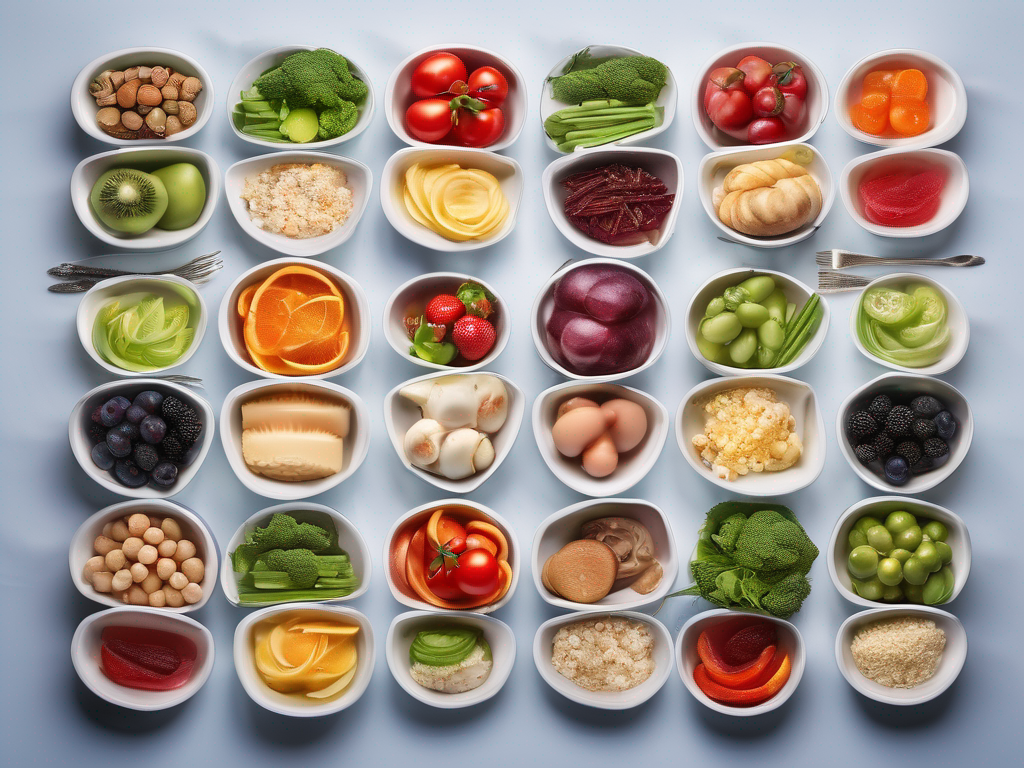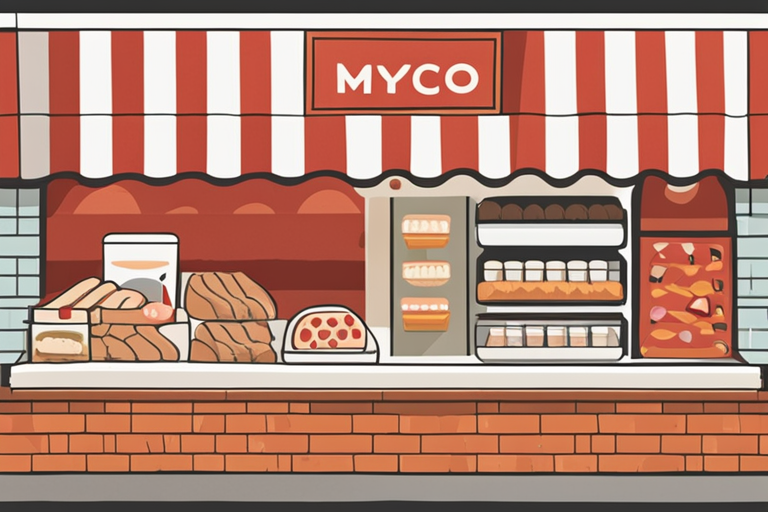
How Long is Mayo Good After the Best By Date?
Get Your Free Food Safety Cheat Sheet
30 most common foods with instant answers. Print it and stick it on your fridge—completely free!
# How Long is Mayo Good After the Best By Date?
Mayonnaise is a popular condiment that adds flavor and creaminess to a variety of dishes. Whether you use it in sandwiches, salads, or as a dip, it's important to ensure that your mayo is safe to eat, especially after the best by date on the label. In this blog post, we'll explore how long mayo is good after the best by date, how to store it properly, and how to tell if it has gone bad.
## Understanding Mayo Shelf Life
Mayonnaise typically has a relatively long shelf life due to its ingredients such as eggs, oil, and vinegar, which help preserve it. The best by date on the packaging is an indication of when the mayo is at its peak quality in terms of flavor and texture. However, mayo can often remain safe to consume for some time after this date if stored correctly.
### Factors Affecting Mayo Shelf Life
Several factors can impact the shelf life of mayo, including:
- **Storage conditions:** Proper storage is key to maintaining the quality of mayo. Keeping it refrigerated at a consistent temperature helps prevent bacterial growth.
- **Contamination:** Avoid introducing contaminants like dirty utensils or double-dipping, as these can introduce harmful bacteria to the mayo.
- **Quality of ingredients:** Using fresh ingredients to make mayo can extend its shelf life compared to store-bought varieties.
## How Long is Mayo Good After the Best By Date?
While the best by date is a helpful guideline, mayo can often be safe to eat beyond this date if it has been stored properly. Here are some general guidelines to help determine if your mayo is still good:
### Signs Your Mayo Has Gone Bad
- **Change in color:** If your mayo has darkened or developed any unusual colors, it's best to discard it.
- **Unpleasant odor:** A rancid or sour smell is a clear indication that the mayo has gone bad.
- **Separation:** If the mayo has separated into layers or has a watery consistency, it's no longer safe to eat.
- **Mold growth:** Any signs of mold growth on the surface of the mayo indicate spoilage.
### Mayo Storage Tips
To maximize the shelf life of your mayo and ensure its safety, follow these tips:
1. **Refrigerate promptly:** After opening the mayo, always store it in the refrigerator to maintain its quality.
2. **Check for proper sealing:** Make sure the lid is tightly sealed after each use to prevent air exposure.
3. **Avoid cross-contamination:** Use clean utensils to scoop out mayo and avoid double-dipping to prevent contamination.
4. **Keep it away from heat:** Store mayo away from heat sources or direct sunlight to prevent spoilage.
## Real-Life Scenarios
Imagine it's a sunny day, and you’re hosting a backyard barbecue. You’ve got a table laden with burgers, hot dogs, and a delightful potato salad mixed with mayo. As your guests dig in, you remember that the mayo jar has been sitting in your fridge for a while. You glance at the best by date—it's a month past. You hesitate, remembering that mayo can sometimes be good after the date. You decide to take the risk, believing your guests will enjoy it. Fortunately, you checked for any signs of spoilage beforehand, and everything turned out fine, but it’s a reminder of how important it is to know what to look for.
In another scenario, let’s say you’re whipping up a quick sandwich for lunch. You’re in a hurry and grab that jar of mayo from the back of the fridge, but the lid is slightly loose. You remember reading somewhere that exposure to air can spoil condiments quicker. You quickly check for any off smells or discoloration and decide to use it anyway. Later, you feel a twinge of concern. Did you make the right choice? This scenario illustrates how important it is to keep track of your condiments and ensure they are stored properly.
## Scientific Context
Understanding the science behind mayonnaise can also help alleviate concerns about its safety. Mayonnaise is an emulsion, primarily made from oil, egg yolks, and an acid (like vinegar or lemon juice). The acidity helps inhibit the growth of bacteria. This is why commercially produced mayonnaise, which often contains preservatives, can be safe for some time even after the best by date.
Homemade mayo, however, lacks these preservatives and thus has a shorter shelf life. The USDA recommends that homemade mayonnaise should be stored in the refrigerator and consumed within 3 to 4 days.
Interestingly, the oil in mayonnaise can also act as a barrier against some bacteria, as it creates an anaerobic environment where bacteria find it hard to thrive. However, this doesn’t mean that you should take chances. Always prioritize food safety and hygiene.
## Practical Tips
Want to stretch the life of your mayo even further? Here are some actionable tips to keep in mind:
- **Use a Labeling System:** If you’re like me and tend to forget when you opened a jar, consider labeling it with the date it was opened. This simple trick can help you keep track of how long it’s been sitting in your fridge.
- **Keep It in the Main Compartment:** Don’t store your mayo in the fridge door. The temperature fluctuates more in the door than in the main compartment, which can reduce its shelf life.
- **Consider Portioning:** If you often find yourself using mayo intermittently, consider portioning it into smaller containers. This way, you can consume the smaller amounts without exposing the entire jar to air and potential contaminants.
- **Know When to Let Go:** Trust your senses. If you detect anything unusual about your mayo, even if it’s before the best by date, don’t hesitate to throw it out. Eating spoiled food is never worth the risk.
## Common Mistakes
Many people often misunderstand the best by date. It’s not an expiration date—many items are still safe to eat after this date if they have been stored correctly. Another common mistake is ignoring contamination. Using dirty utensils to scoop mayo can lead to spoilage much quicker than you might think. Always use clean, dry utensils to prevent introducing bacteria.
People also often confuse the appearance of mayonnaise separating as a sign it’s gone bad when it could simply be a quality issue due to temperature changes. In these cases, a good stir may bring it back to life, provided there are no off smells or mold.
## Expert Insights
As a food safety expert, I can’t stress enough the importance of keeping your refrigerator at 40°F (4°C) or below. This temperature slows down the growth of most bacteria, including those that could spoil your mayonnaise. Additionally, I recommend regular fridge clean-outs to check for expired items, including condiments like mayo. It’s a good habit that can save you from potential foodborne illnesses.
Professional food safety guidelines also suggest that if you’re unsure about the safety of your mayonnaise, particularly if it’s been left out for more than two hours at temperatures above 40°F, it’s best to err on the side of caution and throw it away.
## Safety Warnings
Lastly, here are some important safety warnings to keep in mind:
- **Pregnant Women and Immunocompromised Individuals:** If you fall into these categories, be particularly cautious with mayonnaise. Homemade versions are to be avoided, and make sure any store-bought mayo is pasteurized.
- **Never Leave It Out:** Don’t let mayonnaise sit out at room temperature for extended periods, especially during picnics or potlucks. Bacteria can thrive quickly in warm conditions.
- **Monitor Your Health:** If you consume mayonnaise that you suspect is bad and experience symptoms like nausea, vomiting, or diarrhea, seek medical attention.
## Conclusion
In conclusion, mayo can often be safe to consume after the best by date as long as it shows no signs of spoilage. By understanding the factors that affect mayo shelf life, storing it properly, and recognizing the signs of spoilage, you can enjoy your favorite condiment safely. Remember to trust your senses and use common sense when deciding whether to keep or discard mayo past its best by date. Stay informed, stay safe, and enjoy your meals with confidence!

Authoritative Food Safety References
These agencies and university labs inform every tip and health precaution we publish.
USDA FoodKeeper – Cold Storage Guidelines
Official refrigerator, freezer, and pantry timelines maintained by the U.S. Department of Agriculture.
Visit USDA FoodKeeperFDA Produce Safety Rule & Grower Guidance
Field-to-fridge handling practices that prevent contamination of fruits, vegetables, and leafy greens.
Visit FDA Produce SafetyCDC Foodborne Illness Prevention Hub
Surveillance-backed guidance on pathogens, symptoms, and steps to reduce foodborne illness risk.
Visit CDC Food SafetyUC Davis Postharvest Technology Center
University research detailing optimal storage atmospheres for produce after harvest.
Visit UC Davis PostharvestPenn State Extension – Home Food Preservation & Safety
Peer-reviewed extension bulletins on safe canning, chilling, and reheating practices.
Visit Penn State ExtensionQ: Can I still eat mayo after the expiration date?
Q: How should mayo be stored to prolong its shelf life?
Q: What are the signs that mayo has gone bad?
Q: Can mayo be frozen to extend its shelf life?
Get Your Free Food Safety Cheat Sheet
30 most common foods with instant answers. Print it and stick it on your fridge—completely free! Want more? Upgrade to the complete guide with 70+ foods.
Scan your food directly and get instant safety info using our AI-powered camera feature.